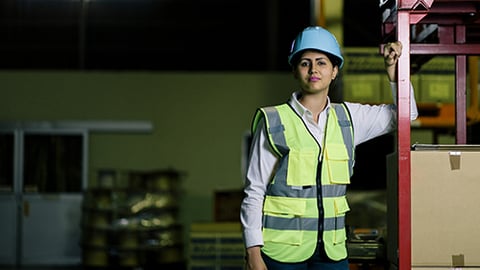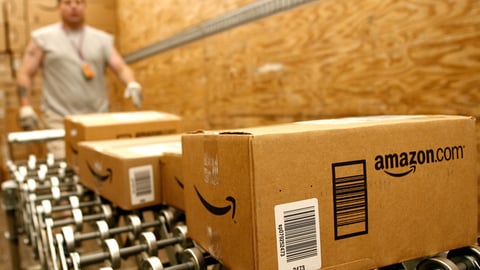Amazon’s Letter to Grocers
Amazon CEO Jeff Bezos’s “letter to shareowners” is hotly anticipated every year, watched closely by anyone and everyone seeking a window into the company’s strategy.
This year, naturally the main theme is COVID-19. But if you look closer, much of the 3,120 word-letter reads like a roadmap to the future of food retail. Sifting through the verbiage, it’s easy to see where Amazon’s strategy is headed: “employee well-being” and “grocery delivery.” The pandemic has put labor and online grocery at the forefront of Bezos’s mind, a lesson for every food retailer looking ahead to what's next in the new pandemic economy.
Over the past several weeks, Amazon, which employs 840,000 people worldwide, has faced protests from some workers who say they don't feel safe continuing to work in its warehouses amid the coronavirus outbreak. Amazon has recently started checking all workers' temperatures, distributing masks and implementing other safety measures. But none of that is enough, according to Bezos. He says "vastly more" COVID-19 testing is needed for the U.S. economy to get humming again. And so his company is building its own lab to begin testing of all its workers.
"We have begun assembling the equipment we need to build our first lab and hope to start testing small numbers of our front-line employees soon," Bezos writes. "Regular testing on a global scale, across all industries, would both help keep people safe and help get the economy back up and running. For this to work, we as a society would need vastly more testing capacity than is currently available. A next step in protecting our employees might be regular testing of all Amazonians, including those showing no symptoms.”
Never has there been a more critical time for Amazon, and all food retailers, to focus on taking care of employees.
To that end, Bezos says his company has made “over 150 significant process changes in our operations network and Whole Foods Market stores to help teams stay healthy, and we conduct daily audits of the measures we’ve put into place.”
Of course, taking care of shoppers is also at the top of Bezos’s mind, and these days, that means taking care of online grocery challenges.
Many food retailers, and Amazon and Whole Foods Market in particular, have been swamped by demand for grocery delivery and curbside pickup as consumers are forced to stay home. Amazon Prime subscribers, who pay $119 a year for free delivery, are having trouble finding Whole Foods delivery or pickup slots. And when their orders do arrive, many desired products are unavailable.
This week Amazon said it would begin placing new customers for its online grocery delivery service on a waitlist. The e-commerce giant wants to prioritize existing customers as a result of heavy demand during the coronavirus pandemic.
Amazon has told Reuters that the setbacks are due to the spike in demand and social distancing constraints in its facilities and stores.
keeping up with demand
In response, Amazon said this week that it has hired 100,000 new warehouse workers over the past month to keep up with the demand and plans to add an additional 75,000. Bezos says this will cost the company more than $500 million through the end of April, and likely more beyond then.
“While we recognize this is expensive, we believe it’s the right thing to do under the circumstances,” he wrote in the letter.
But possibly the most interesting nugget in the letter cites Amazon’s “scale and ability to innovate quickly to make a positive impact and be an organizing force for progress.” The line refers to Amazon’s mission to focus on grocery delivery as a way to cut its carbon footprint.
“We are making significant investments to drive our carbon footprint to zero despite the fact that shopping online is already inherently more carbon efficient than going to the store,” he writes. “Our scientists developed a model to compare the carbon intensity of ordering Whole Foods Market groceries online versus driving to your nearest Whole Foods Market store. The study found that, averaged across all basket sizes, online grocery deliveries generate 43% lower carbon emissions per item compared to shopping in stores. Smaller basket sizes generate even greater carbon savings.”
Look for Amazon to make fixing its online grocery business Priority No. 1 over the next year.
Read Jeff Bezos's letter here.
Amazon, under its Austin, Texas-based Whole Foods Market banner, is No. 10 on Progressive Grocer’s 2019 Super 50 list of the top grocers in the United States.






